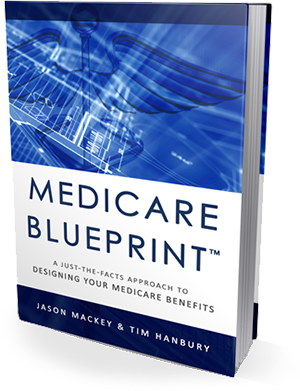Sifting through the rules, regulations, exceptions, inclusions, and specifications of Medicare can be daunting! Health insurance verbiage can feel like a completely different language for most, and Medicare is no different. When you’re looking for a Medicare plan you have to temper what you need with what you can afford, which can be easier said than done when you go it alone.
There are all sorts of stipulations that you need to know, but how are you to know that if you aren’t an expert? Our mission is to help take the mystery out of terms like deductibles, copays, and coinsurance so that you can make the most informed choice for your specific needs.
What is a Deductible in Medicare?
Almost all health plans, including Medicare, have a deductible. This is the money that a member has to pay on their own before their benefits step in to pay either the whole thing or a percentage, according to the plan coverage. In 2022 the standard deductible for Medicare is $233, and you only have to pay that deducible once per calendar year. Some people opt to have a Medigap plan that will pay the Part B deductible. Part B will not pay anything until you meet the $233 out of pocket.
Part A of Medicare works differently and goes by the “benefit period,” which covers all services that are in the Part A coverage. The Benefit Period begins when you are hospitalized and it ends 60 days after you’ve gone without any nursing, hospital, or skilled-care services.
Part A benefits, therefore, are not attached to a calendar year, so you can have many benefit periods yearly and there is no limit to those periods. In 2022, Medicare requires that you pay $1556 out of pocket related to each “benefit period.”
A Real-Life Example
If you go to the hospital and are admitted on March 9th and then released on March 14th, the benefit period begins on March 9th and will end on May 14th if you seek no services for the reason that brought you to the hospital post-release date. For that entire coverage period, you would pay a Part A deductible of $1556 once.
If, however, you went home and needed to return on March 23, and were released again on March 31, your benefit period would be May 31st if you had no other services past the second release date.
Part D Prescription Drug Plans and some Medicare Advantage Plans have annual deductibles, which are the amount you have to pay out of pocket before the plan will pick up the expense.
What is Coinsurance in Medicare?
Coinsurance differs from deductibles because it is the health care expense that is covered once you meet your deductible and is typically a percentage of the total cost. For example, once you meet your deductible of $223, then your plan might cover 80% of the expense, while you pay the remaining 20%.
For Part A, there is a fixed amount you are covered for inpatient care. For the first sixty days, you are required not to pay anything during the initial benefit period. After that, you are required to pay $389 for all days from day 61 to 90, and $778 from day 91 until you have used up all of your “reserve days,” which are allocated on a lifetime basis, and are 60 days. Once those are used up, you have to pay 100% of inpatient care costs. That is when Medigap coverage really pays off – it allows for 365 days, or a full year’s worth, of hospital care coverage once Medicare stops paying.
What is a Copay in Medicare?
A copay in Medicare is a dollar amount that does not change what you pay out of pocket for a healthcare service, regardless of what the actual bill is. There are instances where you might be required to pay a copay and a coinsurance payment, depending on where you are and what your benefit plan states. Copays sometimes count towards your annual deductible and sometimes do not, but they always will go toward your out-of-pocket maximum.
Almost all Medicare Advantage managed care plans have a copay method and the amount varies from $10-$20 (or $50 if you need to be seen in the emergency room). Plans set their own copays and the requirements are listed in the Summary of Benefits. Part D is a prescription plan that often uses the copay system. Some use a “tiered schedule,” which tends to be generic or cheaper alternative drugs and have lower copayments, with higher costs for more expensive medications.
What is a Maximum Out-of-Pocket Limit?
When your plan talks about a “maximum out-of-pocket” limit, it is the amount beyond which your plan will pay 100% of all health care costs. Typically your coinsurance and your copayments both go toward the maximum of your plan’s specifications. Your monthly premiums, however, do not.
Under the original Parts A & B of Medicare, there is no such thing as an out-of-pocket maximum, meaning that you are responsible for all payments of coinsurance, regardless of how much you spend. That is why in many cases, Medicare itself is not enough to cover you. If you want to make sure that there is a cap for a catastrophe, then additional coverage might be necessary.
Medigap coverage will likely lessen your out-of-pocket maximum. These are plans that are designed to limit your risks and to pay for all of your coinsurance and deductible requirements under Parts A & B.
Insurance carriers that offer Medicare Advantage have to include a maximum that you pay out of pocket per member. Although it can vary, the federal government does mandate the maximum yearly amount, which was $7,550 in 2022. Therefore, no plan is allowed to make it higher than that set limit. Most Medicare Advantage plans do not count out-of-network providers in their maximum paid out-of-pocket, so it is always best to choose an in-network provider.
Part D Is Not Included
When it comes to out-of-pocket maximums, there is no limit for Part D. Regardless of whether you reach your max under Parts A & B, you will still be required to pay Part D copays. They typically have their own maximum paid out of pocket or “catastrophic coverage.” In 2022, members are required to pay $7,050 for medication costs before any catastrophic coverage kicks in. Once you hit that limit, the costs for generic medications are $3.70 and $9.20 for brand-name per prescription or a total of 5% of the cost of the drug, whichever is a greater amount.
Why Do You Need Us?
As you can see, there are all sorts of inclusions and exclusions and rules that can really leave you vulnerable. The best way to ensure that you are entirely covered for all that can go wrong, while also paying the least possible, is by having someone on your side to demystify the process. At Medicare BluePrint, we are your trusted advisors. Remember, we aren’t getting paid – we are just here to help. Contact us today and let us guide the way!


